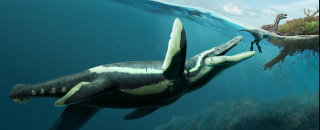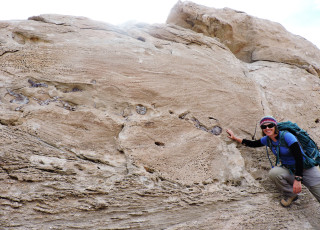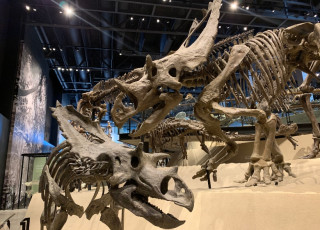12 Days of Dinosaurs: An NHMU Holiday Celebration
By Olivia Barney
We’re kicking off the holiday season at NHMU in typical museum fashion by looking to the past — approximately 66–250 million years ago — and delivering 12 Days of Dinosaurs to your door (ahem, inbox). Visit this page each day (December 1-12) to discover a new featured dinosaur of the day. NHMU’s paleontology team hand-picked species especially significant to Utah (as well as a few of their personal favorites) to help you discover something new each day.
Day twelve will bring an extra special surprise that you don't want to miss.
Why 12 Days of Dinosaurs?
People are inherently curious — and that curiosity is a gift which inspires innovative technologies, breakthrough medical treatments, and a continual exploration of the world around us. Part of NHMU’s mission is to encourage that spirit of discovery among all who walk through our doors: students, families, and researchers alike. A large branch of the research conducted at the museum explores the history, habits, and diets of Utah’s prehistoric inhabitants — the most famous of which are dinosaurs.
Our current understanding of dinosaurs is vastly different than what it used to be, primarily because science is a process of discovery. New evidence allows us to alter our assumptions and expand our understanding. Utah’s desert landscape contains an abundance of fossil records, making it one of the best places in the world to study paleontology. These discoveries are often shared through events like DinoFest, which is coming up in January 2025.
And what better way to prepare for the biggest dino event of the year than by brushing up on a few of NHMU’s favorite species. Dinosaur lovers unite — we’re diving into a 12-day dinosaur review!
On the Twelfth Day of Dinosaurs My True Love Gave to Me: Twelve Brachauchenius lucasi
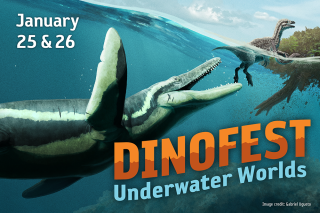
(Pronunciation: brak-OW-ken-EE-us luh-CAH-see)
We know, Brachauchenius lucasi is not technically a dinosaur. It’s a pliosaur — a carnivorous underwater predator with a massive head, short neck, and long, tear-shaped body. And yet, we’re featuring this terrifying creature of the deep to deliver an extra special gift for our dinosaur-loving NHMU family.
SURPRISE! The theme for DinoFest 2025 is Underwater Worlds, and we want YOU to join us in an exploration of these prehistoric waters.
DinoFest returns to the Natural History Museum of Utah on January 25–26, 2025. It’s our biggest event of the year, with experts from around the world and activities you won’t want to miss! Now that the countdown to the event is officially on, we will be revealing more exciting details in the days and weeks ahead. Don’t miss the surprises — be the first to see the news by subscribing to our newsletter and following us on Instagram, Facebook, and TikTok. Happy holidays; we can’t wait to explore Underwater Worlds with you in the new year! (Until then, try singing the entirety of the 12 Days of Dinosaurs!)
Eleven Nothronychus graffami
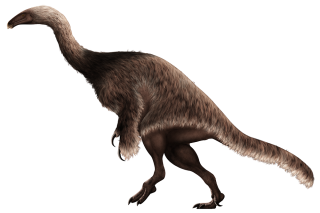
(PaleoNeolitic, CC BY 4.0 https://creativecommons.org/licenses/by/4.0, via Wikimedia Commons)
(Pronunciation: no-THROW-nee-kus graf-AH-mee)
Nothronychus graffami was discovered in a peculiar way (when a Kane County resident stumbled across a bone) and in a peculiar place (a formerly marine environment, indicating the dinosaur had been swept out to sea). But it seems fitting, because Nothronychus graffami was a very peculiar dinosaur. With a large pot belly for fermenting vegetation, a tiny head resting upon a long neck, and large sickle-shaped claws for grasping high branches, this slow-moving dinosaur was essentially the Cretaceous equivalent of a giant sloth.
Ten Gryposaurus monumentensis
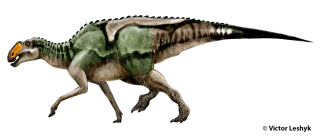
(Pronunciation: GRIP-oh-SORE-us MAHN-you-men-TEN-siss)
When you think of enormous dinosaurs, the mighty Tyrannosaurus rex might come to mind. But Gryposaurus monumentensis, a hadrosaurid (duck-billed dinosaur) from the Late Cretaceous could easily grow to the same size! They were massive, with mouths full of 300 razor-sharp teeth at any given time, with hundreds of replacement teeth waiting. Unlike the Tyrannosaur tyrant of similar size, Gryposaurus ate plants, not meat. They have been found as far north as Alberta, Canada, making them the dinosaurs with one of the largest geographical ranges. Paleontologists believe they traveled in herds, and there’s evidence to suggest that Gryposaurus monumentensis was family oriented — nesting in colonies and caring for their young. Check out how Maddie Connolly, an NHMU paleontology volunteer, discovered a juvenile Gryposaurus on her first excursion!
Nine Abydosaurus mcintoshi
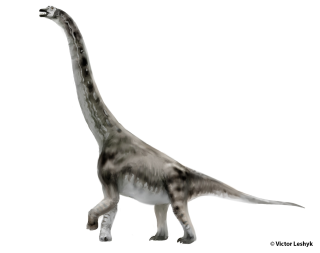
(Pronunciation: uh-BUY-dough-SORE-us MAC-in-TOSH-eye)
You’re probably familiar with long-necked sauropods like Camarasaurus or Barosaurus, but you might not be as familiar with Abydosaurus mcintoshi. The Abydosaurus is most closely related to the Brachiosaurus, growing up to 43 feet long. It lived in the Early Cretaceous and featured a mouth full of narrow teeth — narrower than its other long-necked relatives. This narrowness gave them more space for extra teeth! All dinosaurs lost and replaced teeth throughout their life; it comes with the natural wear and tear of chewing food. But the Abydosaurus replaced their teeth faster and more often, replacing them several times throughout their lives.
Eight Stegosaurus armatus
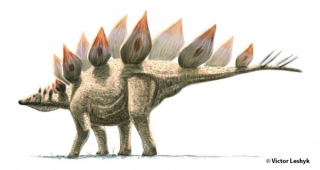
(Pronunciation: STEG-uh-SAWR-us arm-AH-tus)
The Stegosaurus is one of the most well-known (and well-loved) dinosaurs in the world. It’s iconic for the sharp plates that run along its spine, making this plant-eating reptile appear like a formidable force. And yet, these bones along their back were not directly attached to the rest of the skeleton, so they weren’t used for defense. Current theories suggest that these plates could have been used for temperature regulation, attracting mates, and attracting other members of the same species. Though at least two other species of Stegosaurus have been found across Utah, Wyoming, and Colorado, Stegosaurus armatus remains a favorite among the NHMU team. You can see it for yourself in our Past Worlds exhibition.
Seven Allosaurus fragilis
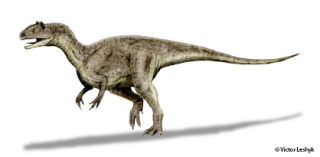
(Pronunciation: AL-oh-SORE-us fraj-ILL-iss)
Utah’s state fossil, Allosaurus fragilis, made headlines recently as NHMU unveiled “Ally at the Airport,” a skeleton display at Salt Lake City International. It is also a crowning jewel in the museum’s Past Worlds exhibition — with NHMU housing the best collection of Allosaurus fragilis specimens in the world. These globally recognized, carnivorous terrors were the quintessential Jurassic predators. Their short arms were powerful, featuring large claws that were used to attack prey. While they may not have been the fastest runners, they were probably faster than contemporaneous meat-eaters, like Ceratosaurus nasicornis or Torvosaurus tanneri.
Six Seitaad ruessi
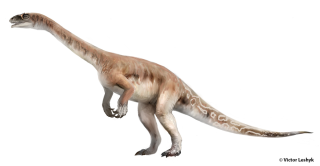
(Pronunciation: SAY-todd ROO-ess-EYE)
One of the things that makes Utah’s natural landscape incredible is the diversity and abundance of fossil records preserved within the earth! The discovery of Seitaad ruessi, for example, is completely unique to Utah. This small relative of the hulking Brachiosaurus only measures about 10 feet in length. It was excavated by NHMU paleontologists from rocks belonging to 185-million-year-old sand dunes — and as tribute to a sand monster in sacred Navajo stories, was named Seitaad. The only known Seitaad fossil skeleton is housed in NHMU’s collections.
Five Parasaurolophus
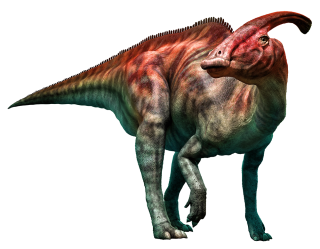
(Pronunciation: par-ah-SAWR-OL-uh-fus)
The Parasaurolophus was a duck-billed dinosaur from the Late Cretaceous. It featured a long, distinctive head crest, and thanks to fossilized skin impressions, we know it had scaly, reptilian skin. Utah has the greatest number of Parasaurolophus fossils currently discovered, so the species is a favorite among NHMU’s Paleontology team. The name Parasaurolophus translates to “like Saurolophus,” because of its similar appearance to another duck-billed dinosaur. Scientists believe that the Parasaurolophus may have blown air through its head crest, making a sound similar to that of an elephant trumpeting — though they aren’t certain whether this call was used in defense, mating calls, or general communication between members of the herd. Tylor Birthisel, NHMU’s Paleontology Lab Manager, calls this special feature “tube technology.”
Four Diabloceratops eatoni
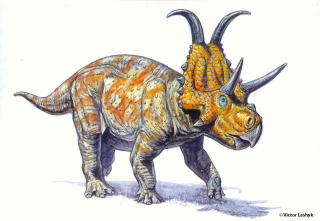
(Pronunciation: dee-OB-low-sarah-tops ee-TON-eye)
The Natural History Museum of Utah is home to the largest display of horned dinosaurs in the world, featuring a wide variety of ceratopsians. One of these, Diabloceratops eatoni, is quite literally one of a kind. The specimen on display at NHMU is the only known specimen of Diabloceratops to date. The dinosaur, which is unique to Utah, is the oldest known centrosaurine (a family of ceratopsids whose name translates to “pointed lizard”) and the first discovered south of Montana. Distinguished by two prominent horns on the top of its head, the Diabloceratops gives paleontologists important clues to understanding the evolution of ceratopsians.
Three Utahraptor ostrommaysi
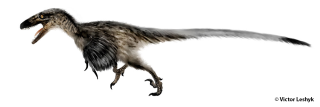
(Pronunciation: YOU-tah-WRAP-tore ah-STROM-ay-SORE-um)
Raptors are dromaeosaurids, a group of carnivorous, feathered dinosaurs that walked on two legs and featured razor-sharp claws. While the most well-known member of the group is the Velociraptor, Utah is home to its much larger cousin. The Utahraptor is one of the oldest dromaeosaurids, and prior to its discovery, paleontologists had a much different view of this family of sickle-clawed dinosaurs. For a long time, dromaeosaurids were thought to be small, carnivorous hunters that only lived in the Late Cretaceous. Utahraptor ostrommaysi, which was around twenty feet long and lived during the Early Cretaceous, challenged those beliefs — leading to a whole new understanding of this group of hunters.
Two Akainacephalus johnsoni

(Pronunciation: uh-KINE-uh-SEF-uh-lus jahn-SOH-nee)
This armored species is a first in the Ankylosaur family. Ankylosaurs are a group of four-legged herbivores that are often called “armored” thanks to the spikes and horns that cover their bodies, as well as their bony, clubbed tails. A team of paleontologists working with NHMU discovered Akainacephalus johnsoni, a brand-new species of Ankylosaur, at the Kaiparowits Formation of Grand Staircase-Escalante National Monument (GSENM), in Kane County, southern Utah. The name comes from the Greek words akaina, meaning “spike” or “thorn,” and cephalus, meaning “head.” The species epithet johnsoni honors Randy Johnson, a dedicated museum volunteer who skillfully prepared its skull.
And a Ceratosaurus nasicornis
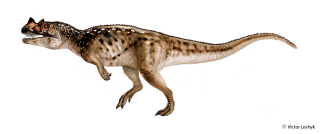
(Pronunciation: sir-AT-toe-SORE-us nay-si-CORN-iss)
The Ceratosaurus was a ferocious predator unlike any other. While Ceratosaurus fossils are rare, they’re instantly recognizable — horn-like crests adorned its nose and eyes, and a row of bony armor, called osteoderms, ran along its back. Ceratosaurus lived at the same time as its famous relative, Allosaurus fragilis, but was significantly smaller. There's a lot paleontologist don’t yet know about the Ceratosaurus, partially because of how rare their fossils are. The Ceratosaurus displayed in the Past Worlds exhibition was uncovered at the Cleveland-Lloyd Dinosaur Quarry (a large dinosaur graveyard in the desert of central Utah). It’s unique, even for a Ceratosaurus; the specimen displayed at the Natural History Museum of Utah is one of the largest Ceratosaurus skeletons uncovered — and to date, it’s the only one to have been found with osteoderms.
